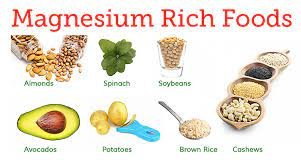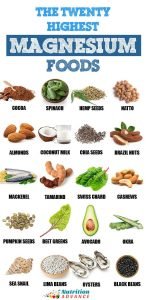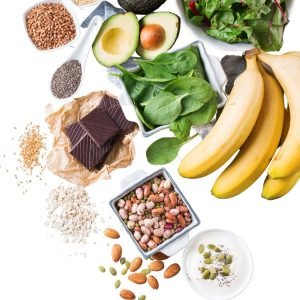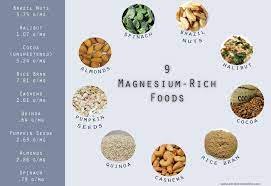Magnesium is one of the most critical nutrients our body needs for optimal functioning. It plays a pivotal role in over 300 enzymatic reactions within the body, including the metabolism of food, synthesis of fatty acids and proteins, and the transmission of nerve impulses. Despite its critical role in human health, many people are not aware of the importance of consuming foods high in magnesium. With that in mind, let’s delve into the world of magnesium-rich foods and how they can help promote our wellbeing.
Foods High in Magnesium

Magnesium: The Underappreciated Mineral
Before we identify magnesium-rich foods, it’s essential to understand why we should pay attention to this crucial nutrient. Magnesium plays a role in cardiovascular health, bone health, mood regulation, and sleep. Research shows that a deficiency can lead to symptoms such as fatigue, loss of appetite, nausea, and even heart arrhythmias and seizures.
Despite its importance, magnesium deficiency is not uncommon. The National Institutes of Health notes that certain populations, such as older adults, are particularly susceptible. Lifestyle factors, like consumption of processed foods and alcohol, can also contribute to reduced magnesium levels.

Top Magnesium-Rich Foods
To make sure you’re getting enough magnesium in your diet, incorporate these foods into your meals.
Green Leafy Vegetables
Green leafy vegetables, particularly spinach and Swiss chard, are excellent sources of magnesium. One cup of cooked spinach contains 157 mg of magnesium, nearly 40% of the recommended daily intake (RDI). These vegetables are also high in other vitamins and minerals, making them a healthy addition to any meal.
Nuts and Seeds
Nuts and seeds are magnesium powerhouses. Almonds, for instance, have 80 mg of magnesium per serving (about 23 almonds), or 20% of the RDI. Other high-magnesium options include cashews, peanuts, and flaxseeds. Beyond magnesium, these foods provide healthy fats and fiber.
Whole Grains
Whole grains, such as brown rice, quinoa, and whole wheat bread, are a fantastic source of magnesium. One cup of cooked quinoa, for example, contains 118 mg of magnesium, around 30% of the RDI. Whole grains also supply a good dose of fiber and other essential nutrients.
Legumes
Legumes, which include lentils, chickpeas, black beans, and soybeans, are packed with magnesium. A single cup of black beans can deliver 120 mg of magnesium, or roughly 30% of the RDI. Legumes are also excellent sources of fiber and protein.
Dark Chocolate
For those with a sweet tooth, you’ll be delighted to know that dark chocolate is high in magnesium. A 1-ounce serving of dark chocolate with 70–85% cocoa contains 64 mg of magnesium, or 16% of the RDI. It’s also rich in antioxidants and prebiotic fiber.
Avocados
A medium avocado provides 58 mg of magnesium, which is 15% of the RDI. This creamy fruit is also high in potassium, B-vitamins, and vitamin K. Not to mention, it’s packed with heart-healthy monounsaturated fat.
Bananas
While bananas are well known for being rich in potassium, they also provide a good amount of magnesium. One large banana contains 37 mg of magnesium, or around 9% of the RDI.
Fatty Fish
Fatty fish, such as salmon, mackerel, and halibut, are not just great sources of omega-3 fatty acids, but they’re also high in magnesium. Half a fillet (178 grams) of salmon provides 53 mg of magnesium, which is 13% of the RDI.

Incorporating Magnesium-Rich Foods Into Your Diet
Knowing which foods are rich in magnesium is one thing, but integrating them into your daily diet is another. Here are some simple and tasty ideas:
- Start your day with a bowl of oatmeal topped with bananas and a handful of almonds.
- For lunch, have a spinach salad topped with avocado and seeds, or opt for a whole grain sandwich.
- Snack on a small piece of dark chocolate or some roasted nuts in the afternoon.
- For dinner, grill a piece of salmon and serve with a side of cooked quinoa and steamed spinach.

Magnesium is an essential nutrient that plays a vital role in our body. Unfortunately, many people fail to get enough from their diet. Thankfully, magnesium is found in a variety of foods, from leafy green vegetables and whole grains to delicious dark chocolate. By incorporating more of these foods into your daily meals, you can ensure your body gets the magnesium it needs to function at its best. As with all dietary changes, it’s always a good idea to consult with a healthcare professional or a registered dietitian to make sure you’re meeting your individual nutritional needs.

Read More-

